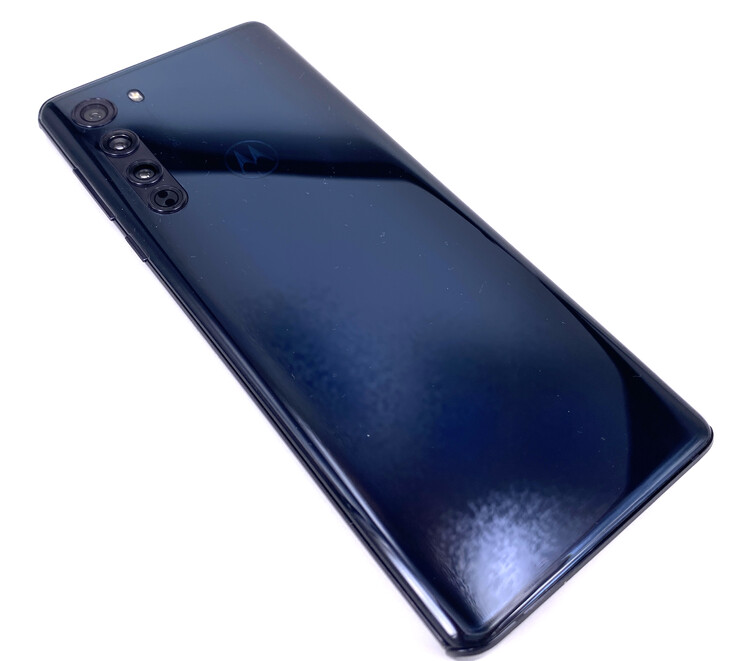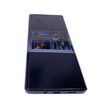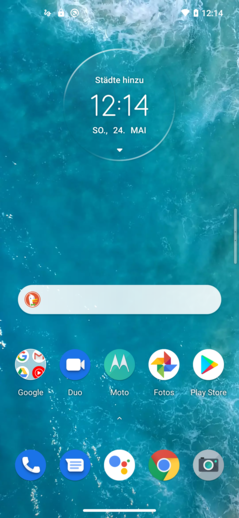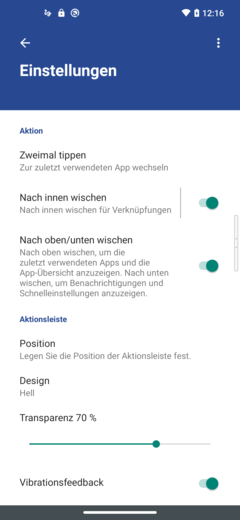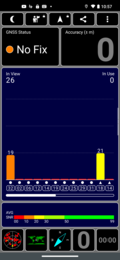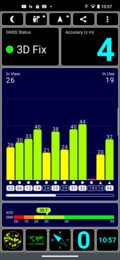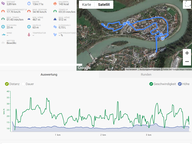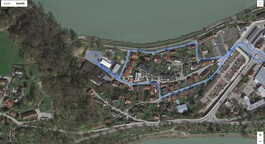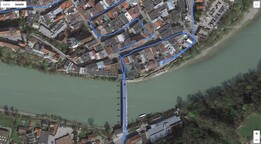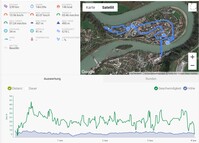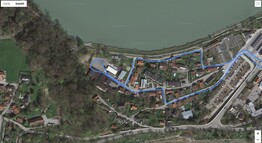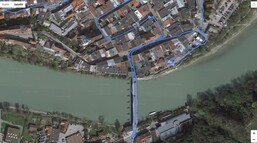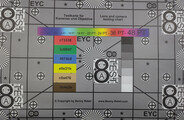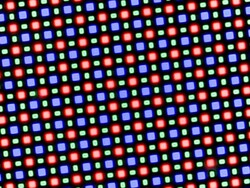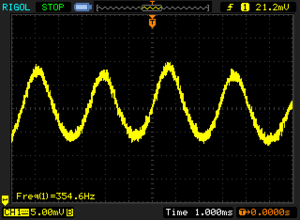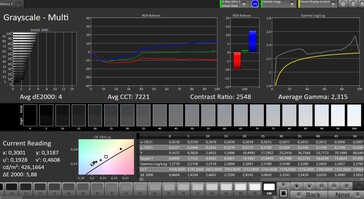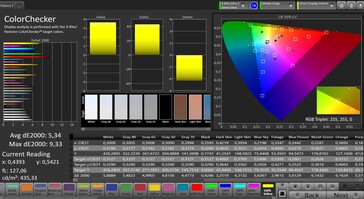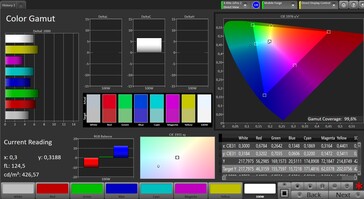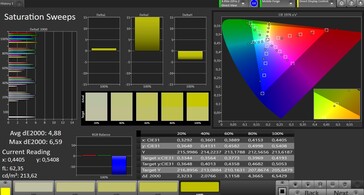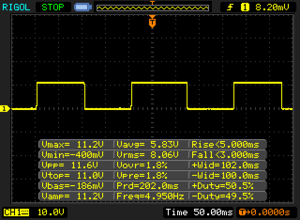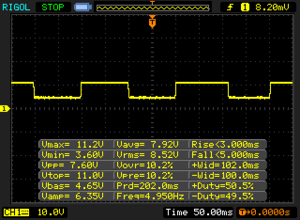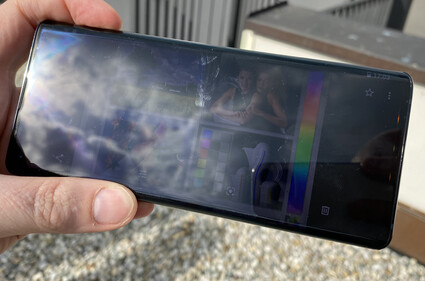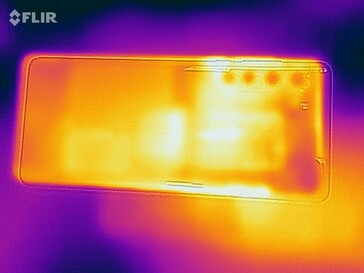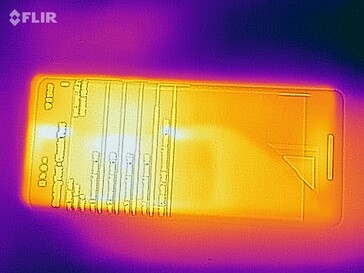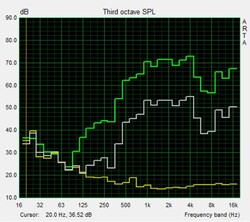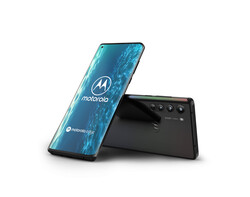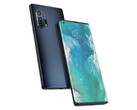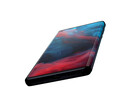Motorola Edge Smartphone Review – 5G without Bezels
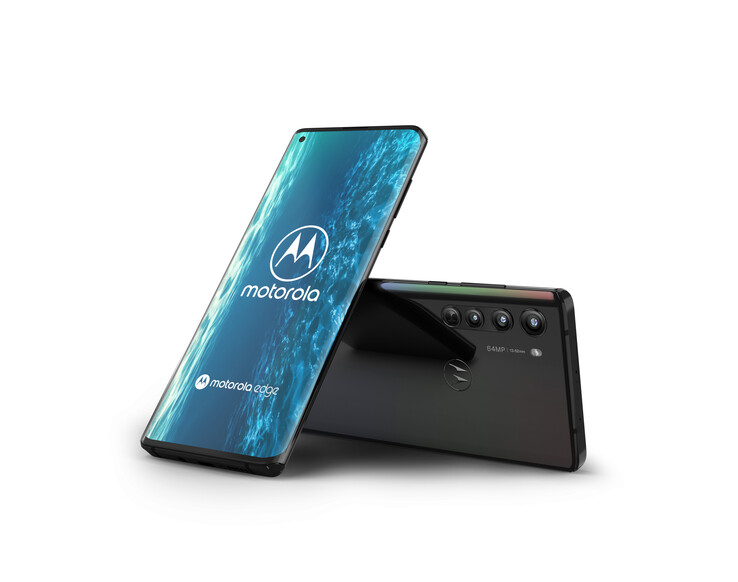
On April 22, 2020, Motorola introduced a brand-new family of higher-priced smartphones. Given that Motorola’s previous Moto Z range of flagship smartphones was long gone these new devices were eagerly expected. Today, we take a closer look at the Motorola Edge, a lower-tier and more affordable upper mid-range family member.
Motorola’s flagship device, the Motorola edge+, is currently not available in Europe and sold only in North America. Nevertheless, the somewhat lesser equipped Motorola Edge still managed to surprise us with quite a few unique features, such as the edgeless 90 Hz display or its high-resolution main camera accompanied by two secondary cameras with different focal lengths for improved versatility. And for all fans of analog audio: yes, a 3.5-mm headphone jack is available as well.
The price for all this? Around 600 Euros (~$661), according to Motorola. Let’s find out whether or not that price is justified.
Test Group
Rating | Date | Model | Weight | Drive | Size | Resolution | Price |
|---|---|---|---|---|---|---|---|
| 81 % v7 (old) | 05 / 2020 | Motorola Edge SD 765, Adreno 620 | 190 g | 128 GB UFS 2.1 Flash | 6.70" | 2340x1080 | |
| 85.8 % v7 (old) | 04 / 2020 | Google Pixel 4 XL SD 855, Adreno 640 | 193 g | 64 GB UFS 2.1 Flash | 6.30" | 3040x1440 | |
| 83.8 % v7 (old) | 01 / 2020 | Xiaomi Mi Note 10 Pro SD 730G, Adreno 618 | 208 g | 256 GB UFS 2.0 Flash | 6.47" | 2340x1080 | |
| 86 % v7 (old) | 02 / 2020 | Samsung Galaxy S10 Lite SD 855, Adreno 640 | 186 g | 128 GB UFS 3.0 Flash | 6.70" | 2400x1080 | |
| 86.5 % v7 (old) | 09 / 2019 | Apple iPhone 11 A13 Bionic, A13 Bionic GPU | 194 g | 64 GB SSD | 6.10" | 1792x828 |
Case – Nothing on the sides, barely anything at the top and bottom
The Motorola Edge features a chassis made of glass with a top and bottom metal edge. The glass at the front extends very far over the edges leaving practically no bezels even at the top and bottom. Color options for its rear side include dark blue or wine-red with a multi-layered shiny surface.
Overall, the smartphone looks very sharp. It feels good in hand, and the transitions between the various materials are smooth and well done, except for the gap at the bottom metal edge which was larger than expected. At 190 g (~6.7 oz) the Edge is quite bulky yet still lighter than a Xiaomi Mi Note 10 Pro or an iPhone 11. Thanks to its narrow design it is well-suited even for smaller hands.
The device is IP52-certified, which means that its surface is water-repellent. Submerging the Edge in water would thus not be the smartest idea.
Connectivity – Motorola with 128 GB of storage
128 GB of storage and 6 GB of RAM are expected of an upper mid-range smartphone these days. Only Apple and Google continue to offer less. On the other side of the spectrum the bar was raised significantly by the 256 GB Mi Note 10 Pro.
To our surprise even Motorola’s current high-end line of smartphones continues to feature a 3.5-mm headphone jack. Most OEMs tend to opt for a USB-C port with matching dongle instead these days. It also supports NFC for mobile payment systems as well as Bluetooth 5.1.
Installing a microSD card will occupy one of the two available SIM slots.
Software – Edge with pure Android
As before, Motorola continues to ship its smartphones with a rather pure flavor of Android 10 and only preinstalls its software suite named MyUX containing all manufacturer-specific extra features. Security patches were as of April 1, 2020, and thus up to date at the time of writing. According to Motorola, the Edge is bound to receive at least one major software update.
We found no additional third-party applications preinstalled.
Communication and GPS – 5G included
The Motorola Edge supports LTE with a maximum download speed of 1 Gbps as well as 5G. The variety of supported frequencies for both technologies is extensive and should be sufficient for travels abroad. Cellular reception was decent during our short test period. Occasionally, the Edge had trouble maintaining an indoor LTE signal strength of more than 50% in cities. And while some smartphones offer a better cellular reception, we should note that we never lost connectivity altogether.
When connected to our Linksys Nighthawk AX12 reference router the Motorola Edge performed very well. It would have scored high enough for first place on both tests if not for an unexpected drop of transfer speed when receiving data.
| Networking | |
| iperf3 transmit AX12 | |
| Motorola Edge | |
| Apple iPhone 11 | |
| Samsung Galaxy S10 Lite | |
| Google Pixel 4 XL | |
| Xiaomi Mi Note 10 Pro | |
| iperf3 receive AX12 | |
| Google Pixel 4 XL | |
| Samsung Galaxy S10 Lite | |
| Apple iPhone 11 | |
| Motorola Edge | |
| Xiaomi Mi Note 10 Pro | |
Outdoor location lock is obtained fairly quickly, and the Edge supports various location services. Accuracy was quite decent at 4 m.
When pitted against the Garmin Edge 520 on our quick bicycle tour around the block the Edge performed exceptionally well in wide open spaces, and it very accurately recorded our track along the turning point as well. It lost track once or twice in the narrow old-town streets but overall, the Motorola Edge is worth recommending should you be looking for an accurate satnav.
Telephony and Call Quality – Quite Distant
Befitting of its pure vanilla flavor of Android, Motorola opted for Google’s default telephone application. It is intuitive and offers a stand-alone dark mode independent of system-wide settings. Its focus is more on contacts and recent callers and less on the dial pad, which can be accessed via a tap of a button.
Call quality when using the device’s earphone was average. We noticed a very distinct hum and ambient noise, particularly on higher volumes. Overall, our conversational partner seemed fairly distant. Our own voice was recorded and transferred fairly well regardless of loudness. Talking on speakerphone yielded similar results. Our conversational partner seemed somewhat distant but could be understood, and our own voice was recorded and transferred clear and clean.
Cameras – 3 Cameras and 4K Video
The main camera lens features a 64 MP sensor. It supports taking full-sized full-resolution photos via a special photo mode. In standard mode, the device uses 4x pixel binning resulting in 16 MP photos with larger yet more light-sensitive pixels by default. At first glance photos looked quite decent. An in-depth inspection revealed a lack of details and focus, the latter of which can be clearly seen on our landscape photo when looking closely at the individual elements and details. Focus remains the largest issue with decreasing light and in high-contrast situations.
The two additional lenses at the rear are a wide-angle and a telephoto lens, the former of which is also used for macro photography. Seamless gradual zooming between the main and wide-angle lens is supported. Motorola mentions a 2x optical zoom that continued to use the standard lens. Given the resulting resolution of 16 MP we are not quite certain whether or not the telephoto lens is even used at all. We have asked Motorola for clarification and will keep you posted.
Videos are recorded in 4K and 30 FPS using the main lens. The other lenses are limited to FHD resolution. You have to pick a lens before you start recording, and switching lenses while recording is not supported. Video quality is decent with somewhat blurry movements given the 30 FPS limitation. Videos turned out very well even in low light, and the camera adjusted very quickly to changes in lighting.
The front facing camera’s resolution of 25 MP is very high. Just like the main camera it suffers from a lack of focus, and its wide-angled focal length can result in visible distortions.
When confronted with very low light in our lab details remained recognizable at the price of dramatically increased noise. Under normal light some areas suffered from pale colors hinting at a rather low contrast ratio.
All things considered the cameras are decent but suffer from a consistent lack of focus and a peculiar zoom.
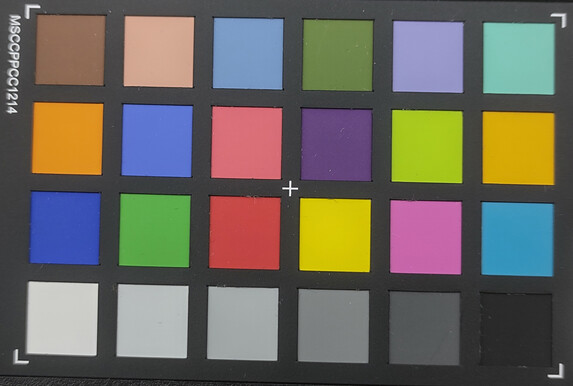
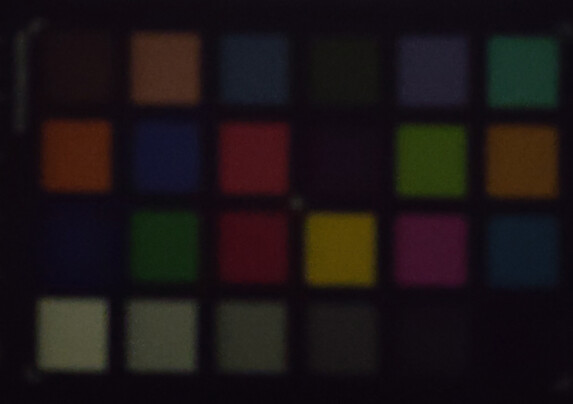
Accessories and Warranty – Silicone Bumper included
Included in the box are a power supply, a USB cable, a wired headset, a silicone bumper, and a SIM tool.
Default warranty depends on country of purchase. Our European model came with 24 months of warranty.
Input Devices & Handling – Try not to touch the edges
The default keyboard is Google’s Gboard, which can be replaced with any keyboard app of your liking.
The Edge’s touchscreen was very accurate but getting used to the edgeless design can take some time. The sides are sensitive to touch and can, under certain circumstances, disrupt the input on the main area of the touchscreen up top. There are certainly ways around this, and once you figure out how to hold it right the touch problem will all but disappear. Unfortunately, holding the phone in a way that rendered the main portion of the display usable without disruptions did not feel particularly secure. The silicone bumper helped somewhat by keeping the fingers away from its touch-sensitive edges.
Speaking of which: those edges can be configured to freely place a button for various quick actions. One of its main purposes is to replace the menu buttons usually found at the bottom of the screen (back button, app switcher, etc). Given the intuitive nature of these side buttons we would have wished for more flexibility. Maybe Motorola will deliver with a future update.
Navigating through the smartphone’s menus was buttery smooth thanks to its 90 Hz display.
The fingerprint reader is embedded into the bottom portion of the display and using it with big hands takes some getting used to. It worked very well and fast. Face unlocking is also supported and worked reliably as well.
Display – Could be Brighter
The Edge smartphone features an AMOLED display with enhanced FHD resolution, which is acceptable for a device in this price bracket. Only the Google Pixel 4 XL features a higher-resolution display. Regardless, image quality was impeccable and individual pixels remained indistinguishable. We particularly liked the 90 Hz refresh rate thanks to which animations and transitions looked and felt incredibly smooth.
A thorn in the Edge’s side is its low display brightness of just 449 nits with enabled ambient light sensor at its absolute peak. It might be bright enough for indoor use, but it is significantly dimmer than its competitors. At 94% brightness distribution was fairly even.
| |||||||||||||||||||||||||
Brightness Distribution: 94 %
Center on Battery: 427 cd/m²
Contrast: ∞:1 (Black: 0 cd/m²)
ΔE ColorChecker Calman: 5.34 | ∀{0.5-29.43 Ø4.78}
ΔE Greyscale Calman: 4 | ∀{0.09-98 Ø5}
99.6% sRGB (Calman 2D)
Gamma: 2.315
CCT: 7221 K
| Motorola Edge AMOLED, 2340x1080, 6.7" | Google Pixel 4 XL P-OLED, 3040x1440, 6.3" | Xiaomi Mi Note 10 Pro AMOLED, 2340x1080, 6.5" | Samsung Galaxy S10 Lite Super AMOLED Plus, 2400x1080, 6.7" | Apple iPhone 11 IPS, 1792x828, 6.1" | |
|---|---|---|---|---|---|
| Screen | 22% | 15% | 34% | 57% | |
| Brightness middle (cd/m²) | 427 | 557 30% | 579 36% | 622 46% | 679 59% |
| Brightness (cd/m²) | 438 | 555 27% | 576 32% | 630 44% | 671 53% |
| Brightness Distribution (%) | 94 | 95 1% | 89 -5% | 96 2% | 93 -1% |
| Black Level * (cd/m²) | 0.68 | ||||
| Colorchecker dE 2000 * | 5.34 | 3.9 27% | 4.61 14% | 2.7 49% | 0.8 85% |
| Colorchecker dE 2000 max. * | 9.33 | 6.1 35% | 7.72 17% | 5.9 37% | 2.4 74% |
| Greyscale dE 2000 * | 4 | 3.5 12% | 4.2 -5% | 3 25% | 1.1 72% |
| Gamma | 2.315 95% | 2.18 101% | 2.244 98% | 2.09 105% | 2.24 98% |
| CCT | 7221 90% | 6127 106% | 7201 90% | 6246 104% | 6610 98% |
| Contrast (:1) | 999 |
* ... smaller is better
Screen Flickering / PWM (Pulse-Width Modulation)
| Screen flickering / PWM detected | 355 Hz | ||
The display backlight flickers at 355 Hz (worst case, e.g., utilizing PWM) . The frequency of 355 Hz is relatively high, so most users sensitive to PWM should not notice any flickering. However, there are reports that some users are still sensitive to PWM at 500 Hz and above, so be aware. In comparison: 53 % of all tested devices do not use PWM to dim the display. If PWM was detected, an average of 8125 (minimum: 5 - maximum: 343500) Hz was measured. | |||
We managed to detect a PWM frequency of just 355 Hz meaning that the display is turned off and back on again 355 times per second in order to lower brightness. As with all AMOLED displays this flickering occurs at brightness levels of 99% and below. Sensitive users should make sure to test the display first.
When inspected with a spectrophotometer and the CalMAN software we found acceptable color deviations with some competitors outperforming the Edge in this regard. A very minor blue tint was visible even to the naked eye, and on-screen colors were thus fairly cool overall.
Display Response Times
| ↔ Response Time Black to White | ||
|---|---|---|
| 8 ms ... rise ↗ and fall ↘ combined | ↗ 5 ms rise | |
| ↘ 3 ms fall | ||
| The screen shows fast response rates in our tests and should be suited for gaming. In comparison, all tested devices range from 0.1 (minimum) to 240 (maximum) ms. » 21 % of all devices are better. This means that the measured response time is better than the average of all tested devices (20.2 ms). | ||
| ↔ Response Time 50% Grey to 80% Grey | ||
| 8 ms ... rise ↗ and fall ↘ combined | ↗ 3 ms rise | |
| ↘ 5 ms fall | ||
| The screen shows fast response rates in our tests and should be suited for gaming. In comparison, all tested devices range from 0.165 (minimum) to 636 (maximum) ms. » 19 % of all devices are better. This means that the measured response time is better than the average of all tested devices (31.6 ms). | ||
Performance – Powerful Moto Smartphone
Inside we find a Snapdragon 765, a modern upper mid-range SoC that should offer more than enough oomph for most applications and use cases.
Our benchmarks revealed that the processor was almost capable of keeping up with last year’s flagship Qualcomm SoC in single-threaded performance but lagged behind noticeably in multi-threaded scenarios.
The GPU of Motorola’s choice is an Adreno 620, an upper mid-range GPU incapable of keeping up with high-end GPUs. Nevertheless, most mobile games should run smoothly. Whether or not 60 FPS are possible remains to be seen, and we will take a closer look at its gaming performance in the Gaming section.
| Geekbench 4.4 | |
| 64 Bit Single-Core Score (sort by value) | |
| Samsung Galaxy S10 Lite | |
| Average Qualcomm Snapdragon 765 (n=1) | |
| Average of class Smartphone (844 - 9776, n=56, last 2 years) | |
| 64 Bit Multi-Core Score (sort by value) | |
| Samsung Galaxy S10 Lite | |
| Average Qualcomm Snapdragon 765 (n=1) | |
| Average of class Smartphone (4134 - 34246, n=56, last 2 years) | |
| Compute RenderScript Score (sort by value) | |
| Samsung Galaxy S10 Lite | |
| Average Qualcomm Snapdragon 765 (n=1) | |
| Average of class Smartphone (5364 - 28121, n=43, last 2 years) | |
| PCMark for Android | |
| Work performance score (sort by value) | |
| Motorola Edge | |
| Google Pixel 4 XL | |
| Xiaomi Mi Note 10 Pro | |
| Samsung Galaxy S10 Lite | |
| Average Qualcomm Snapdragon 765 (9914 - 10045, n=2) | |
| Work 2.0 performance score (sort by value) | |
| Motorola Edge | |
| Google Pixel 4 XL | |
| Xiaomi Mi Note 10 Pro | |
| Samsung Galaxy S10 Lite | |
| Average Qualcomm Snapdragon 765 (8336 - 8756, n=2) | |
| GFXBench 3.0 | |
| on screen Manhattan Onscreen OGL (sort by value) | |
| Motorola Edge | |
| Google Pixel 4 XL | |
| Samsung Galaxy S10 Lite | |
| Apple iPhone 11 | |
| Average Qualcomm Snapdragon 765 (44 - 48, n=2) | |
| Average of class Smartphone (18 - 166, n=155, last 2 years) | |
| 1920x1080 1080p Manhattan Offscreen (sort by value) | |
| Motorola Edge | |
| Google Pixel 4 XL | |
| Samsung Galaxy S10 Lite | |
| Apple iPhone 11 | |
| Average Qualcomm Snapdragon 765 (50 - 50, n=2) | |
| Average of class Smartphone (12 - 606, n=154, last 2 years) | |
| GFXBench 3.1 | |
| on screen Manhattan ES 3.1 Onscreen (sort by value) | |
| Motorola Edge | |
| Google Pixel 4 XL | |
| Samsung Galaxy S10 Lite | |
| Apple iPhone 11 | |
| Average Qualcomm Snapdragon 765 (29 - 32, n=2) | |
| Average of class Smartphone (11 - 166, n=155, last 2 years) | |
| 1920x1080 Manhattan ES 3.1 Offscreen (sort by value) | |
| Motorola Edge | |
| Google Pixel 4 XL | |
| Samsung Galaxy S10 Lite | |
| Apple iPhone 11 | |
| Average Qualcomm Snapdragon 765 (33 - 33, n=2) | |
| Average of class Smartphone (8.4 - 413, n=154, last 2 years) | |
| AnTuTu v8 - Total Score (sort by value) | |
| Motorola Edge | |
| Google Pixel 4 XL | |
| Samsung Galaxy S10 Lite | |
| Average Qualcomm Snapdragon 765 (279244 - 304120, n=2) | |
| VRMark - Amber Room (sort by value) | |
| Motorola Edge | |
| Average Qualcomm Snapdragon 765 (n=1) | |
Our review unit was incapable of keeping up with high-end smartphones in our browsing benchmarks. Real life consequences are an occasional slight delay when loading websites, especially ones laden with images. Nevertheless, browsing the web with the Motorola Edge was fairly smooth and fast overall.
| Jetstream 2 - 2.0 Total Score | |
| Average of class Smartphone (23.8 - 387, n=150, last 2 years) | |
| Apple iPhone 11 (Safari Mobile 13.0) | |
| Samsung Galaxy S10 Lite (Chrome 80) | |
| Average Qualcomm Snapdragon 765 (48.3 - 48.6, n=2) | |
| Motorola Edge (Chrome 81) | |
| JetStream 1.1 - Total Score | |
| Apple iPhone 11 (Safari Mobile 13.0) | |
| Samsung Galaxy S10 Lite (Chrome 80) | |
| Average Qualcomm Snapdragon 765 (87.8 - 88.5, n=2) | |
| Motorola Edge (Chrome 81) | |
| Google Pixel 4 XL (Chrome 80) | |
| Speedometer 2.0 - Result 2.0 | |
| Average of class Smartphone (15.2 - 643, n=126, last 2 years) | |
| Apple iPhone 11 (Safari Mobile 13.0) | |
| Samsung Galaxy S10 Lite (Chrome 80) | |
| Average Qualcomm Snapdragon 765 (26.8 - 45.2, n=2) | |
| Motorola Edge (Chome 81) | |
| WebXPRT 3 - Overall | |
| Apple iPhone 11 (Safari Mobile 13.0) | |
| Average of class Smartphone (38 - 380, n=35, last 2 years) | |
| Google Pixel 4 XL (Chrome 80) | |
| Samsung Galaxy S10 Lite (Chrome 80) | |
| Average Qualcomm Snapdragon 765 (72 - 78, n=2) | |
| Motorola Edge (Chrome 81) | |
| Octane V2 - Total Score | |
| Average of class Smartphone (2228 - 121337, n=198, last 2 years) | |
| Apple iPhone 11 (Safari Mobile 13.0) | |
| Google Pixel 4 XL (Chrome 80) | |
| Samsung Galaxy S10 Lite (Chrome 80) | |
| Motorola Edge (Chrome 81) | |
| Average Qualcomm Snapdragon 765 (16302 - 17700, n=2) | |
| Mozilla Kraken 1.1 - Total | |
| Average Qualcomm Snapdragon 765 (2754 - 2764, n=2) | |
| Motorola Edge (Chrome 81) | |
| Google Pixel 4 XL (Chrome 80) | |
| Samsung Galaxy S10 Lite (Chrome 80) | |
| Average of class Smartphone (257 - 28190, n=153, last 2 years) | |
| Apple iPhone 11 (Safari Mobile 13.0) | |
* ... smaller is better
The Edge's UFS 2.1 storage turned out to be pretty fast. Its card reader worked well, reliably, and fast with our Toshiba Exceria Pro M501 microSD card.
| Motorola Edge | Google Pixel 4 XL | Xiaomi Mi Note 10 Pro | Samsung Galaxy S10 Lite | Average 128 GB UFS 2.1 Flash | Average of class Smartphone | |
|---|---|---|---|---|---|---|
| AndroBench 3-5 | -14% | -37% | 17% | -14% | 167% | |
| Sequential Read 256KB (MB/s) | 941 | 871 -7% | 499.2 -47% | 1489 58% | 761 ? -19% | 2227 ? 137% |
| Sequential Write 256KB (MB/s) | 451.7 | 197.4 -56% | 205.1 -55% | 525 16% | 296 ? -34% | 1836 ? 306% |
| Random Read 4KB (MB/s) | 150.5 | 142.2 -6% | 119.2 -21% | 191.7 27% | 154 ? 2% | 294 ? 95% |
| Random Write 4KB (MB/s) | 145.2 | 164.2 13% | 108.5 -25% | 173.5 19% | 130.4 ? -10% | 332 ? 129% |
| Sequential Read 256KB SDCard (MB/s) | 87.2 ? | 76 ? -13% | 76 ? -13% | |||
| Sequential Write 256KB SDCard (MB/s) | 65.5 ? | 61 ? -7% | 59.6 ? -9% |
Gaming – rarely ever more than 30 FPS
We use GameBench to record the framerates of various games used for evaluating a smartphone’s gaming performance. The results in this case indicate that gaming in 60 FPS is all but impossible in most games, but a consistent 30 FPS are doable most of the time. Only Asphalt 9 dropped below 30 FPS occasionally but settled and stabilized after the first few seconds.
PUBG in smooth yielded around 40 FPS meaning that other games should run just as smoothly with reduced details. High-end gamers will certainly scoff at these results but those with lower demands and expectations will do just fine.
Emissions – Edge does not Throttle
Temperature
At 42.2 °C (~108 °F) the Motorola Edge gets noticeably warm but not yet uncomfortably hot. While it might get somewhat awkward in warmer temperatures, we had no issues with its surface temperatures under normal circumstances.
We run GFXBench’s battery test in order to determine potential thermal throttling issues under sustained load. In case of the Motorola Edge we are happy to report that no such thermal throttling occurred, and performance remained consistent over long periods of time.
(±) The maximum temperature on the upper side is 41.7 °C / 107 F, compared to the average of 35.2 °C / 95 F, ranging from 21.9 to 247 °C for the class Smartphone.
(±) The bottom heats up to a maximum of 42.2 °C / 108 F, compared to the average of 34 °C / 93 F
(±) In idle usage, the average temperature for the upper side is 33.2 °C / 92 F, compared to the device average of 32.9 °C / 91 F.
Speakers
In addition to its single speaker at the bottom, the Edge also utilizes its earphone as second speaker enabling stereo effects. Unfortunately, even combined the speakers did not get particularly loud and the resulting soundscape lacked warmth and volume. Speech and singing are well recognizable, and we found no ambient noise such as hissing or humming, but overall sound quality is average at best.
External speakers and headphones can be connected via 3.5-mm headphone jack or wirelessly via Bluetooth. Both worked great and put out a clean audio signal.
Motorola Edge audio analysis
(±) | speaker loudness is average but good (80.5 dB)
Bass 100 - 315 Hz
(-) | nearly no bass - on average 23.7% lower than median
(±) | linearity of bass is average (7.7% delta to prev. frequency)
Mids 400 - 2000 Hz
(±) | higher mids - on average 5% higher than median
(±) | linearity of mids is average (8.5% delta to prev. frequency)
Highs 2 - 16 kHz
(±) | higher highs - on average 5.5% higher than median
(±) | linearity of highs is average (8.9% delta to prev. frequency)
Overall 100 - 16.000 Hz
(±) | linearity of overall sound is average (22.5% difference to median)
Compared to same class
» 48% of all tested devices in this class were better, 6% similar, 46% worse
» The best had a delta of 11%, average was 35%, worst was 134%
Compared to all devices tested
» 65% of all tested devices were better, 6% similar, 29% worse
» The best had a delta of 4%, average was 24%, worst was 134%
Samsung Galaxy S10 Lite audio analysis
(+) | speakers can play relatively loud (88.9 dB)
Bass 100 - 315 Hz
(-) | nearly no bass - on average 30% lower than median
(±) | linearity of bass is average (11.4% delta to prev. frequency)
Mids 400 - 2000 Hz
(+) | balanced mids - only 3.4% away from median
(+) | mids are linear (3.9% delta to prev. frequency)
Highs 2 - 16 kHz
(±) | higher highs - on average 6.9% higher than median
(+) | highs are linear (4% delta to prev. frequency)
Overall 100 - 16.000 Hz
(±) | linearity of overall sound is average (22% difference to median)
Compared to same class
» 45% of all tested devices in this class were better, 7% similar, 48% worse
» The best had a delta of 11%, average was 35%, worst was 134%
Compared to all devices tested
» 62% of all tested devices were better, 7% similar, 31% worse
» The best had a delta of 4%, average was 24%, worst was 134%
Battery Life – More than Enough
Power Consumption
When idle or under load the Motorola Edge’s power consumption was comparatively high even though it turned out to be average with all load scenarios taken into consideration. Its power consumption peaked at 7.3 W under maximum load, which is fairly decent when compared to other Android smartphones. Keep in mind though that the Edge is also not as powerful.
| Off / Standby | |
| Idle | |
| Load |
|
Key:
min: | |
| Motorola Edge 4500 mAh | Google Pixel 4 XL 3700 mAh | Samsung Galaxy S10 Lite 4500 mAh | Apple iPhone 11 3110 mAh | Average Qualcomm Snapdragon 765 | Average of class Smartphone | |
|---|---|---|---|---|---|---|
| Power Consumption | 7% | 10% | -17% | -21% | -14% | |
| Idle Minimum * (Watt) | 1 | 0.83 17% | 0.58 42% | 0.56 44% | 1.25 ? -25% | 0.847 ? 15% |
| Idle Average * (Watt) | 1.4 | 1.24 11% | 1.55 -11% | 2.99 -114% | 1.75 ? -25% | 1.435 ? -3% |
| Idle Maximum * (Watt) | 2 | 1.25 37% | 1.64 18% | 3.02 -51% | 2.45 ? -23% | 1.619 ? 19% |
| Load Average * (Watt) | 4.8 | 4.98 -4% | 4.29 11% | 4.17 13% | 5.75 ? -20% | 7 ? -46% |
| Load Maximum * (Watt) | 7.3 | 9.09 -25% | 8.03 -10% | 5.44 25% | 8.25 ? -13% | 11.3 ? -55% |
* ... smaller is better
Battery Life
The 4,500 mAh battery lasted long enough to keep the smartphone up and running for 15 hours in our standardized Wi-Fi web browsing test with brightness set to 150 nits. The Xiaomi Mi Note 10 Pro managed to beat this achievement by another three hours. Under load, the battery lasted for exactly four hours.
Translated into real life expectations and experiences this means that the Edge should last several days without recharging, and when used lightly it might even last for a full week.
Motorola’s fast-charging technology for the Edge with a maximum power output of 18 W is referred to as TurboPower. Charging the device from near empty to full took close to 2 hours.
| Motorola Edge 4500 mAh | Google Pixel 4 XL 3700 mAh | Xiaomi Mi Note 10 Pro 5260 mAh | Samsung Galaxy S10 Lite 4500 mAh | Apple iPhone 11 3110 mAh | |
|---|---|---|---|---|---|
| Battery runtime | -30% | 25% | -4% | 4% | |
| Reader / Idle (h) | 41.9 | 41.7 0% | 46.1 10% | ||
| H.264 (h) | 20 | 19.7 -1% | 19.1 -4% | ||
| WiFi v1.3 (h) | 14.8 | 10.4 -30% | 18.5 25% | 13.7 -7% | 14.4 -3% |
| Load (h) | 4 | 3.7 -7% | 4.5 13% |
Pros
Cons
Verdict – Take a look, give it a shot
Motorola’s Edge is a good-looking, eye-candy, mid-range device. Its bezel-less display might not be the first of its kind - in fact, the Samsung Galaxy S7 Edge beat it by four years – but the Edge’s top and bottom bezels are even narrower, and the front of the device is almost all display.
Which brings us to its major shortcoming: touchscreen usability. You have to adjust your grip around the edges in order to avoid triggering accidental touches along its edges.
The speaker and voice quality were also mediocre at best, and we would have wished for more oomph. If you expect high-end camera quality, you will end up disappointed due to the slight yet visible lack of focus. Considering its price, the cameras are okay though.
Things we liked include the pure flavor of Android, the Edge’s fast Wi-Fi modem, its fairly accurate GPS modem, and its decent overall performance allowing for a smooth gaming experience on medium settings. The 3.5-mm headphone jack is also a very welcome bonus that many users will rejoice about. If you are looking for a comparatively affordable 5G smartphone the Motorola Edge might be the right device.
The Motorola Edge is a good-looking 5G smartphone with many pros and some minor cons.
An expensive Motorola smartphone was long overdue, and the team did a fantastic job and proved they are still up to the task. The Motorola Edge is by no means flawless, but if you feel inspired and excited by its design the Edge is a chic 5G smartphone.
Motorola Edge
- 09/03/2022 v7 (old)
Florian Schmitt




